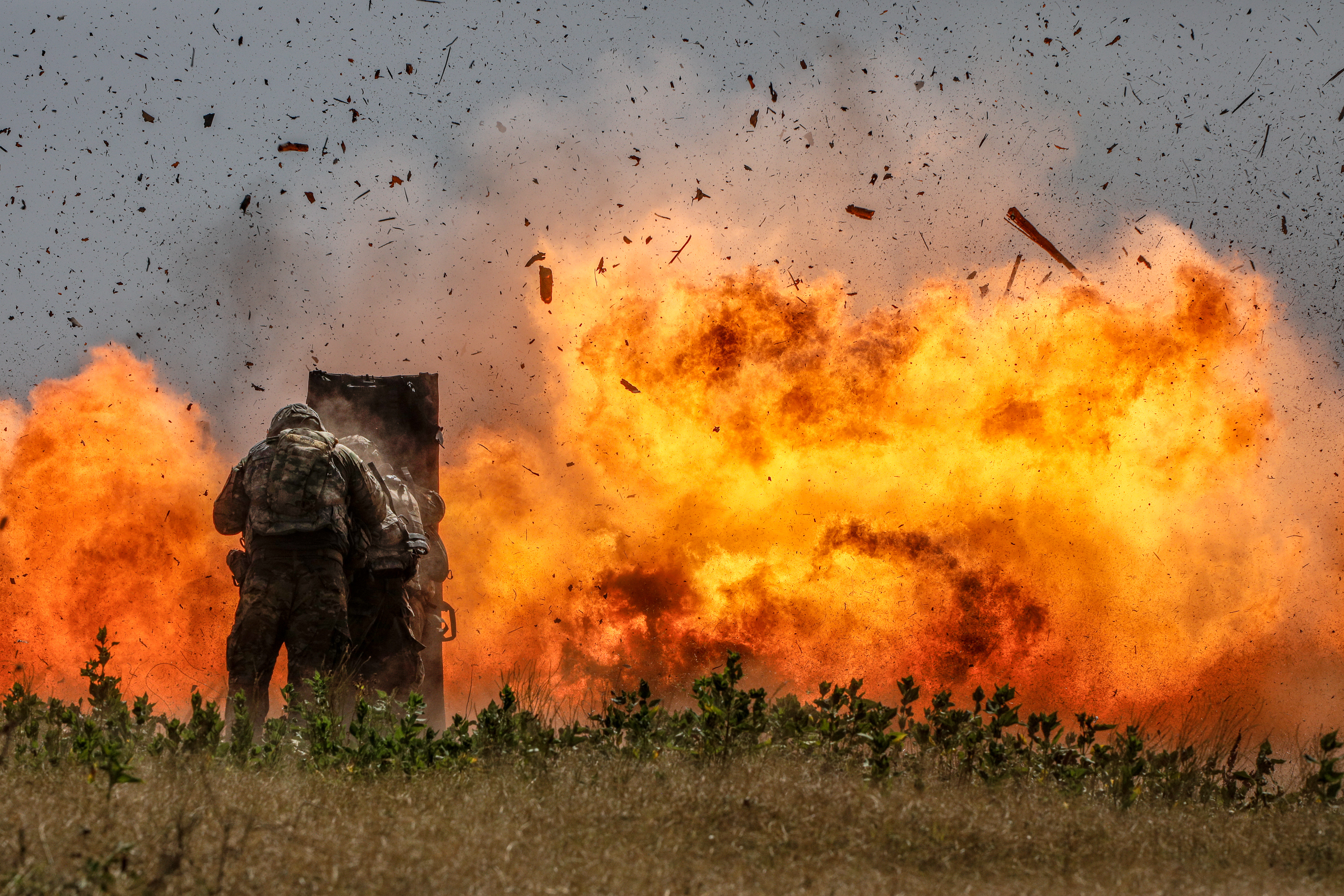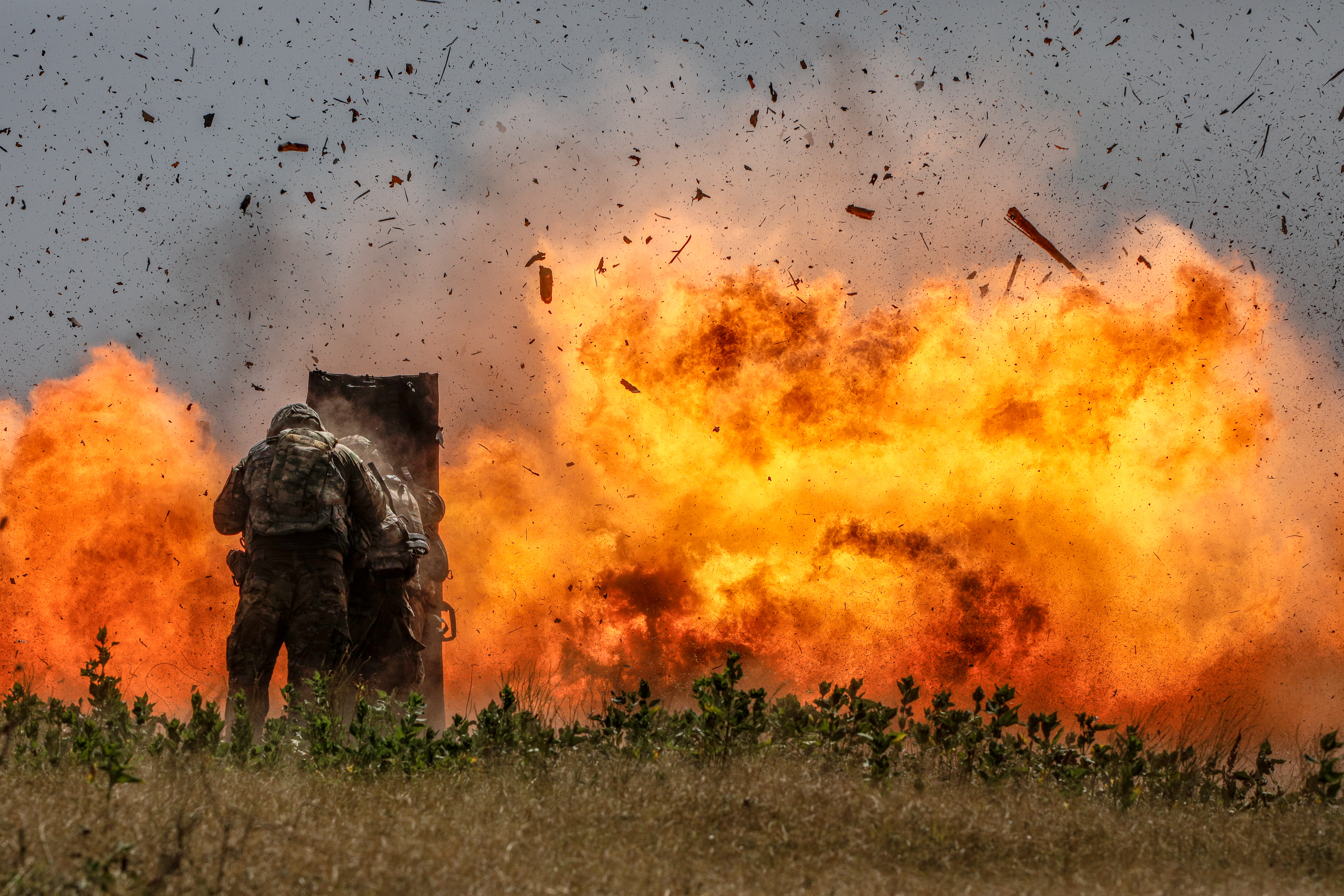

The Pentagon released new rules for how close troops should be to blasts from explosions and their own weapons and announced a program of long-term cognitive testing for troops from early career onward to spot the effects of blast exposures. The Aug. 8 guidance from Deputy Defense Secretary Kathleen Hicks aims to limit the health impacts of exposure to heavy blasts — what the military calls “blast overpressure” — and give military doctors before-and-after data for troops who spend their careers around such blasts.
“Experiences by DoD personnel in training and operational environments demonstrate possible adverse effects on brain health and cognitive performance (e.g., headache, decreased reaction time, attention difficulty, memory loss) resulting from acute (e.g., single or short-term)
and chronic (e.g., repetitive or continuous) exposure to [blast overpressure],” Hicks wrote in the memo. She cautioned that health effects of blast overpressure “are not yet fully understood, but adverse health and cognitive performance impacts have been reported.”
Blast overpressure is the shockwave generated from the kind of explosions and heavy weapons firing common in combat and training environments. Exposure can range from acute (single or short-term) to chronic (repetitive or continuous) and lead to health impacts ranging from headaches, decreased reaction times, to attention difficulties and memory loss in acute or chronic situations. According to the Defense Health Agency, low level blast exposure does not typically lead to diagnosable concussions or traumatic brain injuries but troops should be vigilant about any health symptoms they experience.
With the new guidance, troops should be aware of blast overpressure exposures over 4 pounds per square inch, or psi, which come from breaching charges, shoulder fired weapons, 0.50 caliber rifles/guns, and indirect fire weapons like howitzers and mortars.
The guidance follows the Department of Defense’s Warfighter Brain Health Initiative, stood up in 2022, to better understand the impacts of blast overpressure exposure on troops’ brains. The goal is to enhance servicemember’s health and performance as well as identify, mitigate and prevent traumatic brain injuries.
Safe distances
The Pentagon guidance dictates the safe radial distances that troops should take when interacting with certain weapon systems. The new recommended stand-off distances for various weapons and explosives charges are:
- Breaching explosives: 13 feet
- Shoulder mounted weapons
- Multi-role Anti-armor Anti-personnel Weapon System: 16 feet
- Light Anti-tank 4 Confined Space: 10 feet
- Light Anti-Armor Weapon: 10 feet
- 0.50 Caliber Gun/Rifle: 7 feet
- M107 Sniper Rifle
- Heavy Machine gun (Trailer-mounted)
- MK15 Sniper Rifle
- Howitzers: Teams should be at a distance where pressure from blasts are measured at less than 4 psi (pounds per square inch)
- Mortars:
- M224 60 mm: 3 feet
- M252 81 mm: 7 feet
- M120/121 120 mm: 13 feet
- Mortar teams should be “as close to the ground as possible” to maximize the space below the tube’s muzzle
In addition to service members directly interacting with the weapon systems, the memo also calls for maximum stand-off distances “to the greatest extent possible” for non-training audiences and minimizing the number of personnel in the vicinity to avoid unnecessary exposure. It also calls for personal protective equipment for firers, trainers, and other personnel.
Subscribe to Task & Purpose today. Get the latest military news and culture in your inbox daily.
Individual exposure mitigation
The latest DOD guidance also requires that new active and Reserve component accessions undergo cognitive assessments as part of their entry process. The Pentagon also wants to accelerate baseline cognitive assessments for “high-risk” active duty troops by the end of fiscal year 2025. Troops who regularly train with the highlighted weapon systems are at increased risk of blast overpressure exposure like infantry, field artillery, snipers, gunners, cavalry, weapon instructors, and ordnance specialists.
A separate report released earlier this month found that troops with artillery and ordnance jobs have the highest risk of suicide, a damning example of the connection between blast overpressure and mental health concerns.
The memo also calls for procedures to help troops identify blast overpressure symptoms, report them and seek medical evaluations.
More attention
The issue of troops’ brain and mental health from blast exposures and TBIs have garnered more attention in recent years. Congress has introduced legislation aimed at improving oversight and resources for TBIs and head trauma following the deadliest mass shooting in Maine committed by an Army reservist.
“In Maine, we know all too well the horrible tragedies that can occur, like in Lewiston, when TBIs are left untreated,” Independent Sen. Angus King said in a release about the bill.
However, last month, when the Inspector General released its official review of the events leading up to the mass shooting committed by Sgt. First Class Robert Card, officials distanced itself from his brain health. The IG included a 2008 incident where Card fell from a roof and broke his neck and noted that Card “was not exposed” to combat environments. Lt. Gen. Jody Daniels, Chief of the Army Reserve said Card’s exposure to shock was “relatively minor.” She referred questions on his brain health to Walter Reed National Military Medical Center which is conducting a forensic autopsy.
Meanwhile, a Boston University research analysis of Card’s brain tissue found that he had “significant evidence of traumatic brain injuries” which they suggested could be from his exposure to “thousands of low-level blasts” as an Army instructor for a grenade training range.
